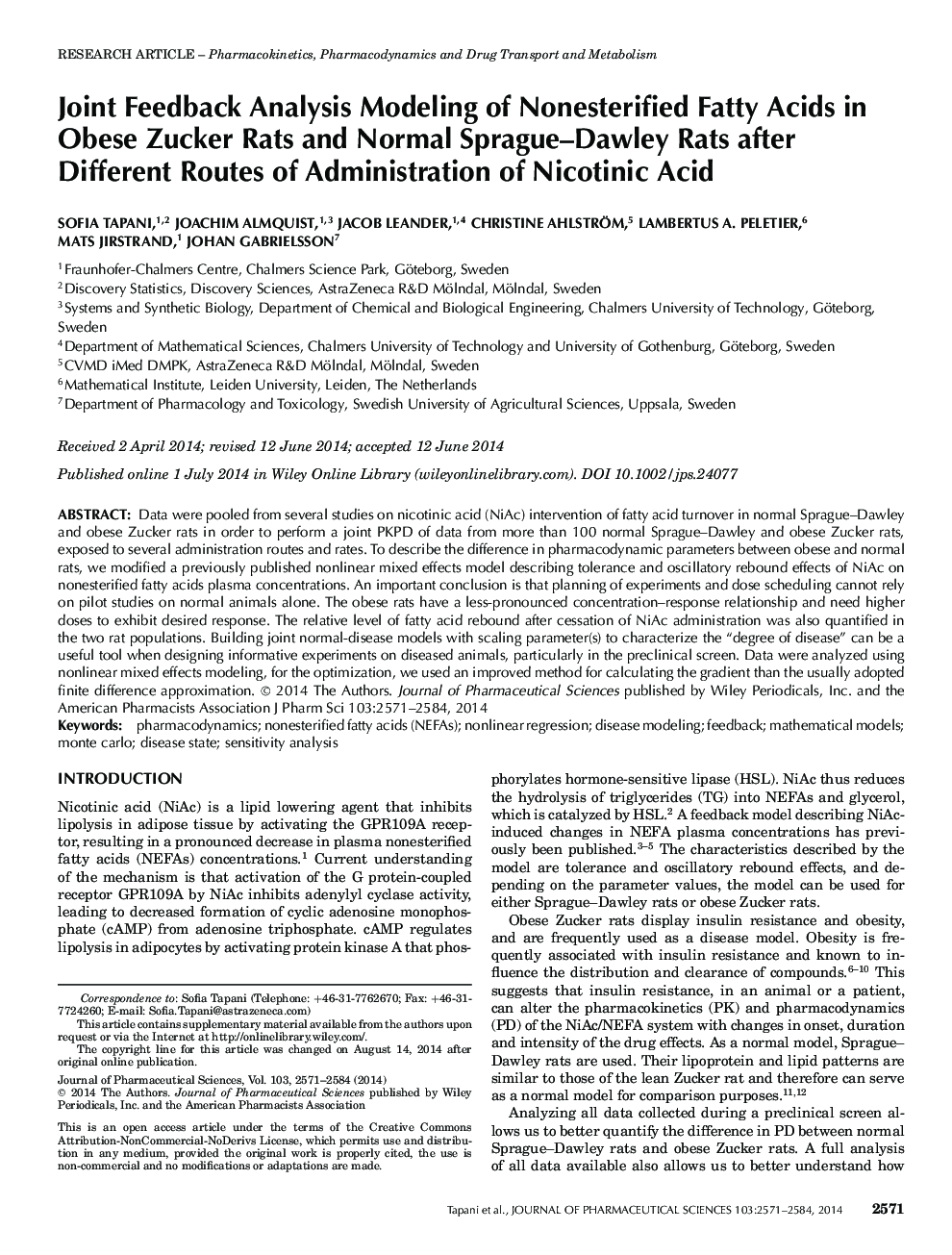| Article ID | Journal | Published Year | Pages | File Type |
|---|---|---|---|---|
| 10162337 | Journal of Pharmaceutical Sciences | 2014 | 14 Pages |
Abstract
Data were pooled from several studies on nicotinic acid (NiAc) intervention of fatty acid turnover in normal Sprague-Dawley and obese Zucker rats in order to perform a joint PKPD of data from more than 100 normal Sprague-Dawley and obese Zucker rats, exposed to several administration routes and rates. To describe the difference in pharmacodynamic parameters between obese and normal rats, we modified a previously published nonlinear mixed effects model describing tolerance and oscillatory rebound effects of NiAc on nonesterified fatty acids plasma concentrations. An important conclusion is that planning of experiments and dose scheduling cannot rely on pilot studies on normal animals alone. The obese rats have a less-pronounced concentration-response relationship and need higher doses to exhibit desired response. The relative level of fatty acid rebound after cessation of NiAc administration was also quantified in the two rat populations. Building joint normal-disease models with scaling parameter(s) to characterize the “degree of disease” can be a useful tool when designing informative experiments on diseased animals, particularly in the preclinical screen. Data were analyzed using nonlinear mixed effects modeling, for the optimization, we used an improved method for calculating the gradient than the usually adopted finite difference approximation. © 2014 Wiley Periodicals, Inc. and the American Pharmacists Association J Pharm Sci 103:2571-2584, 2014
Keywords
Related Topics
Health Sciences
Pharmacology, Toxicology and Pharmaceutical Science
Drug Discovery
Authors
Sofia Tapani, Joachim Almquist, Jacob Leander, Christine Ahlström, Lambertus A. Peletier, Mats Jirstrand, Johan Gabrielsson,
